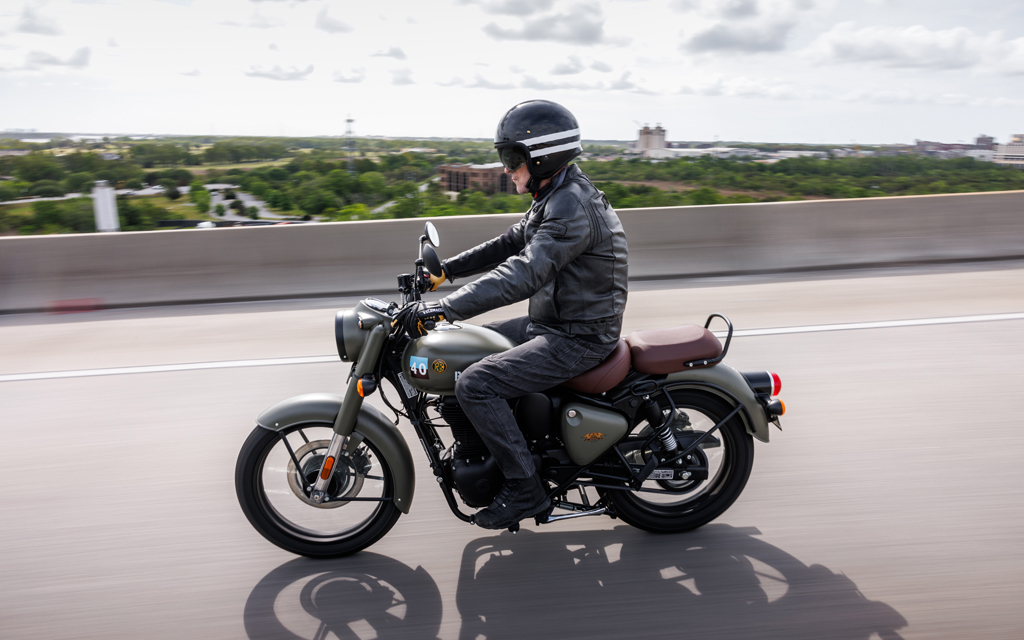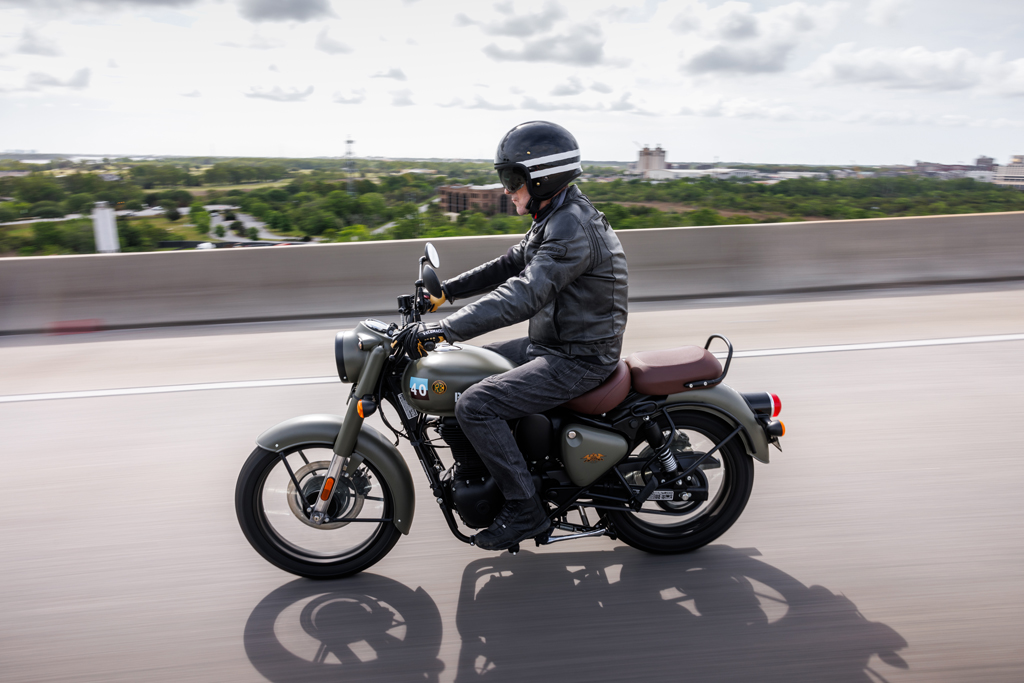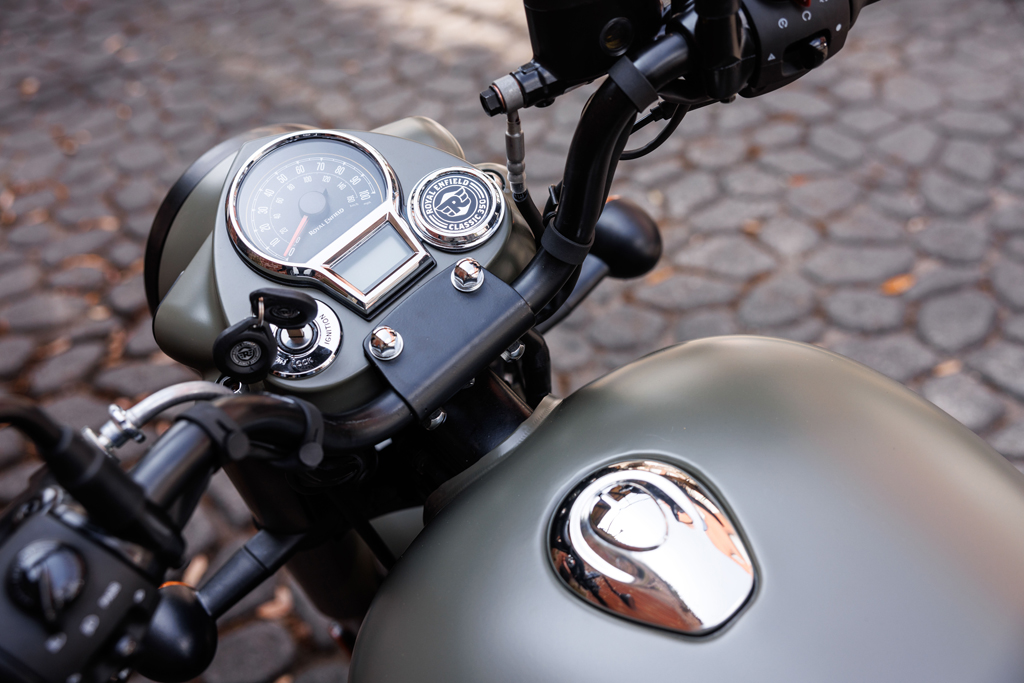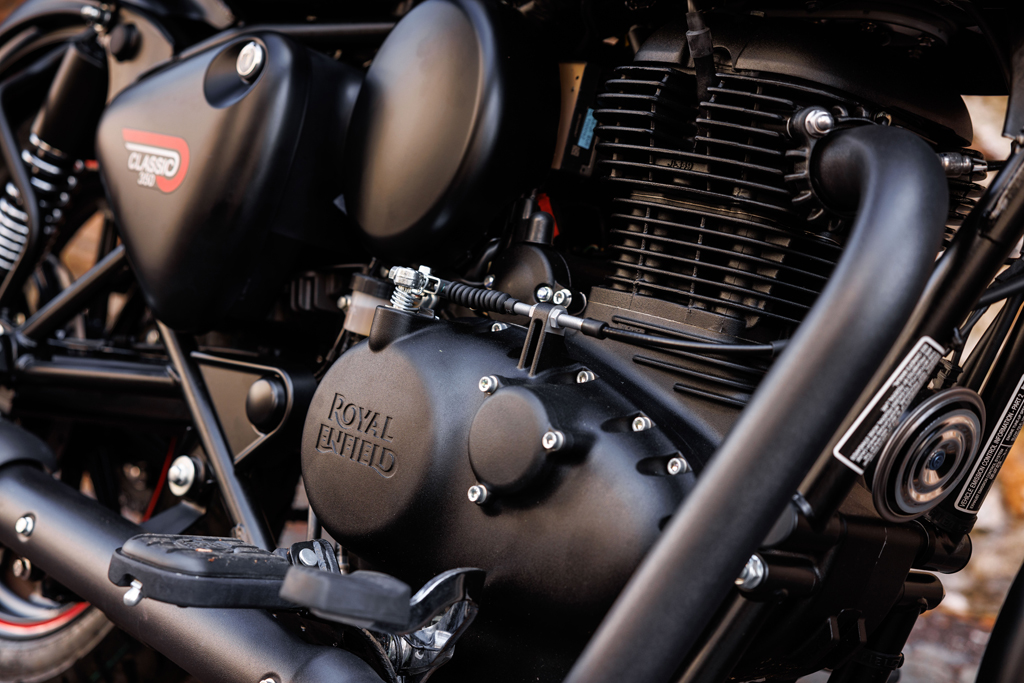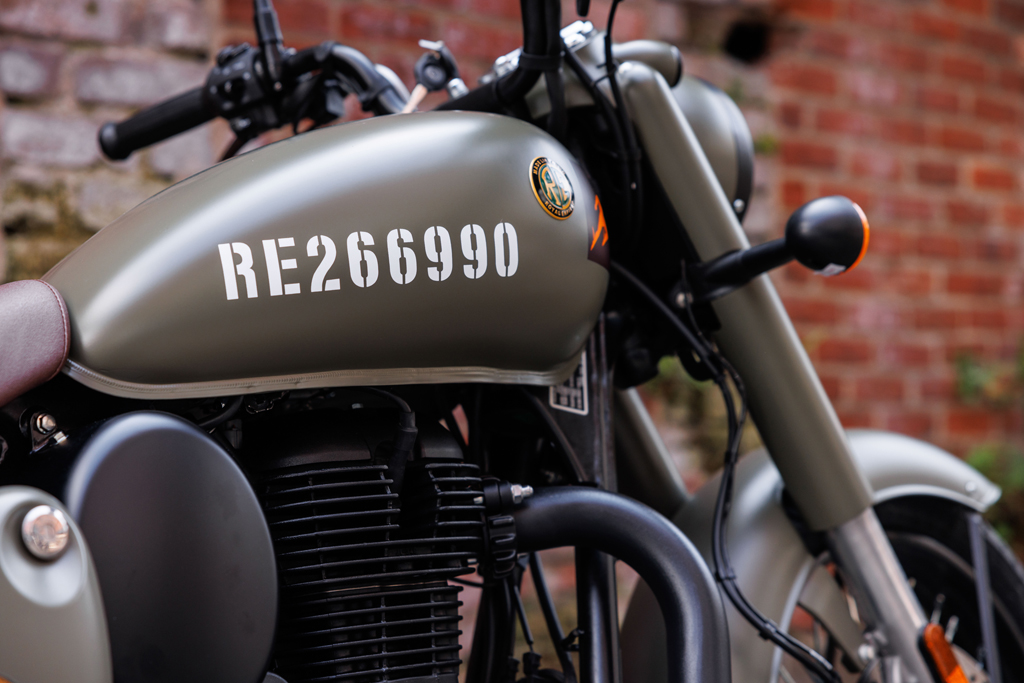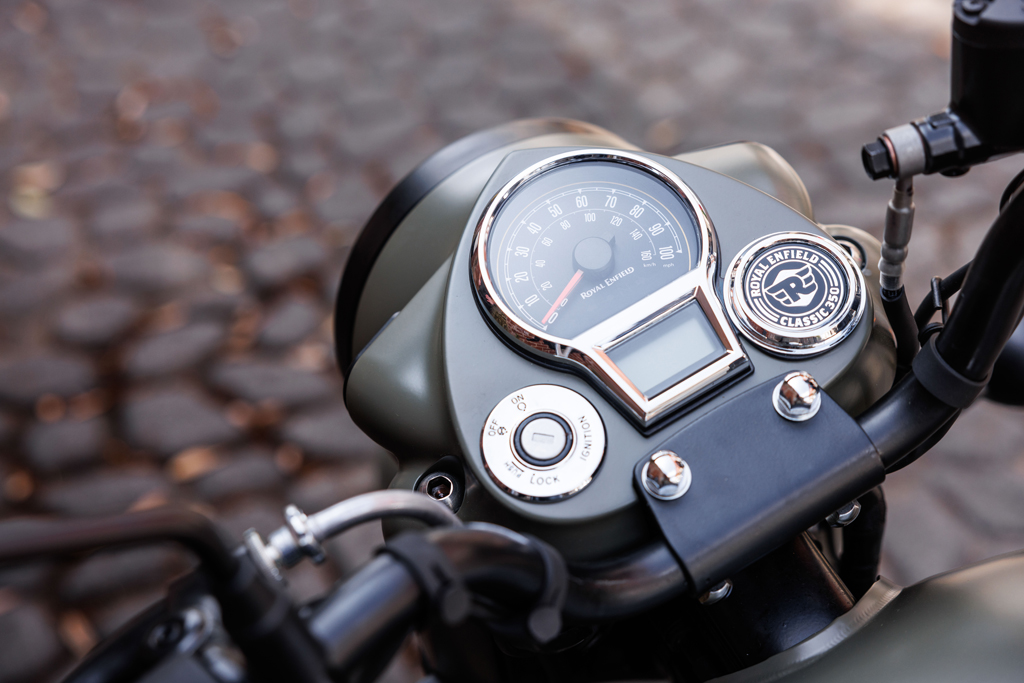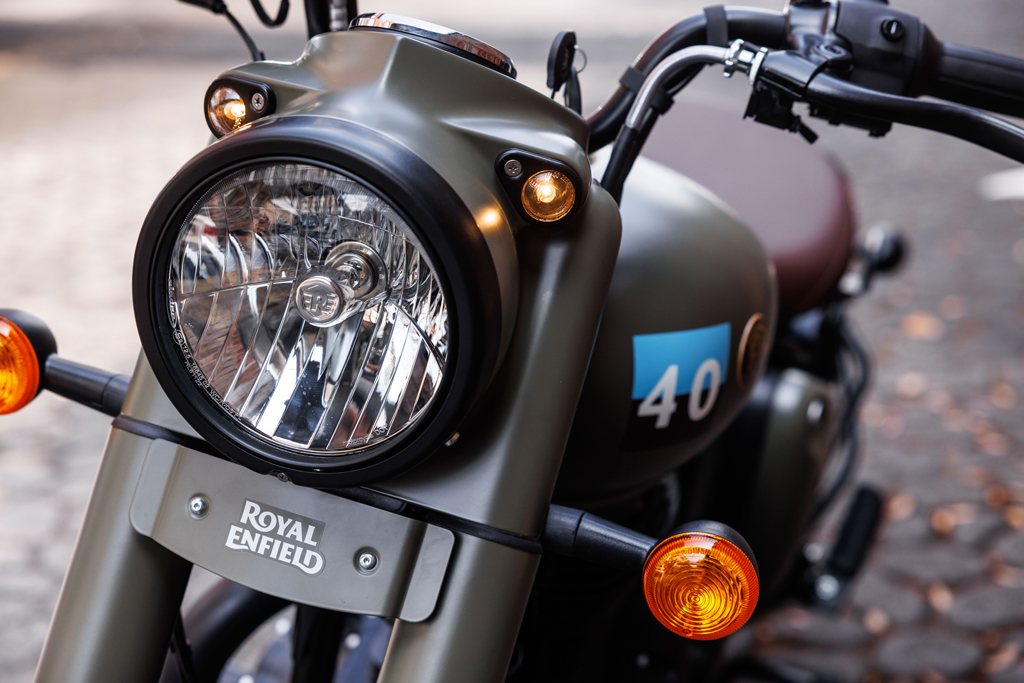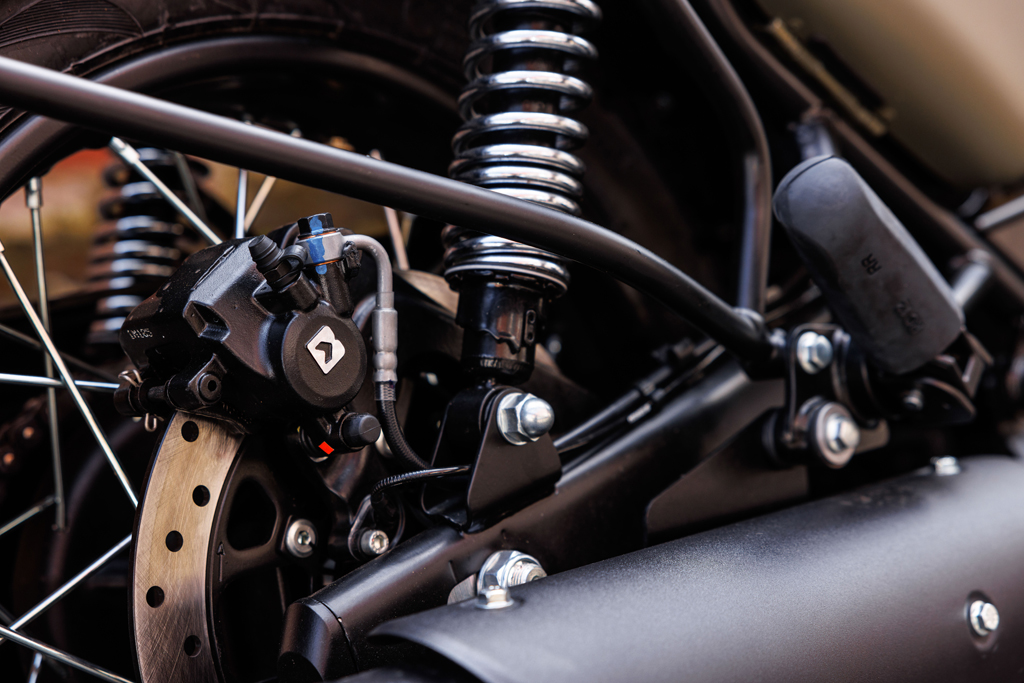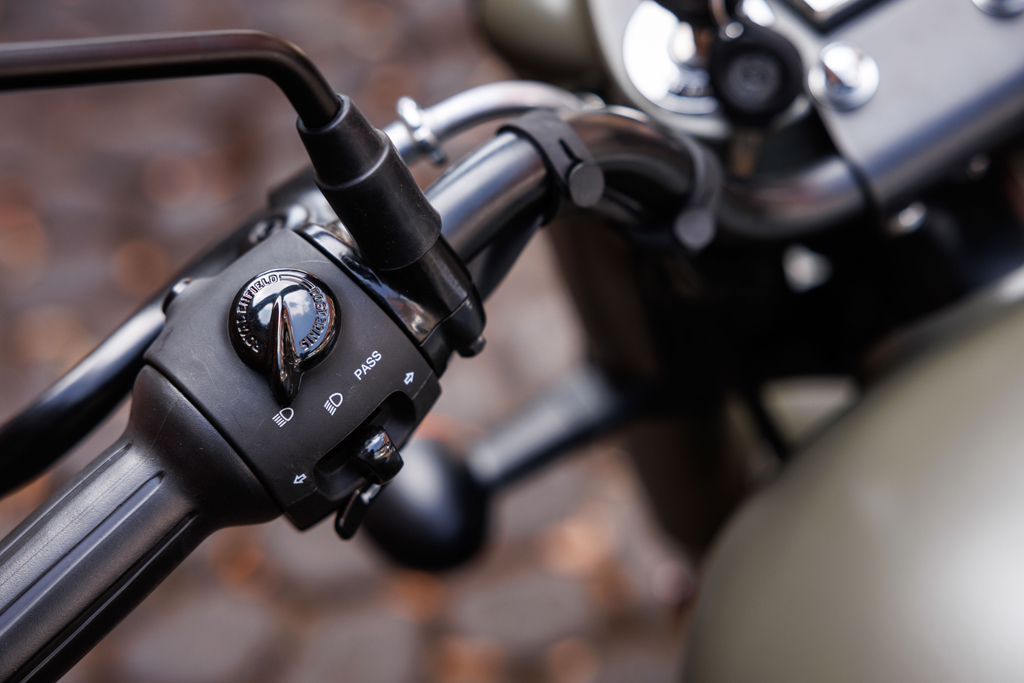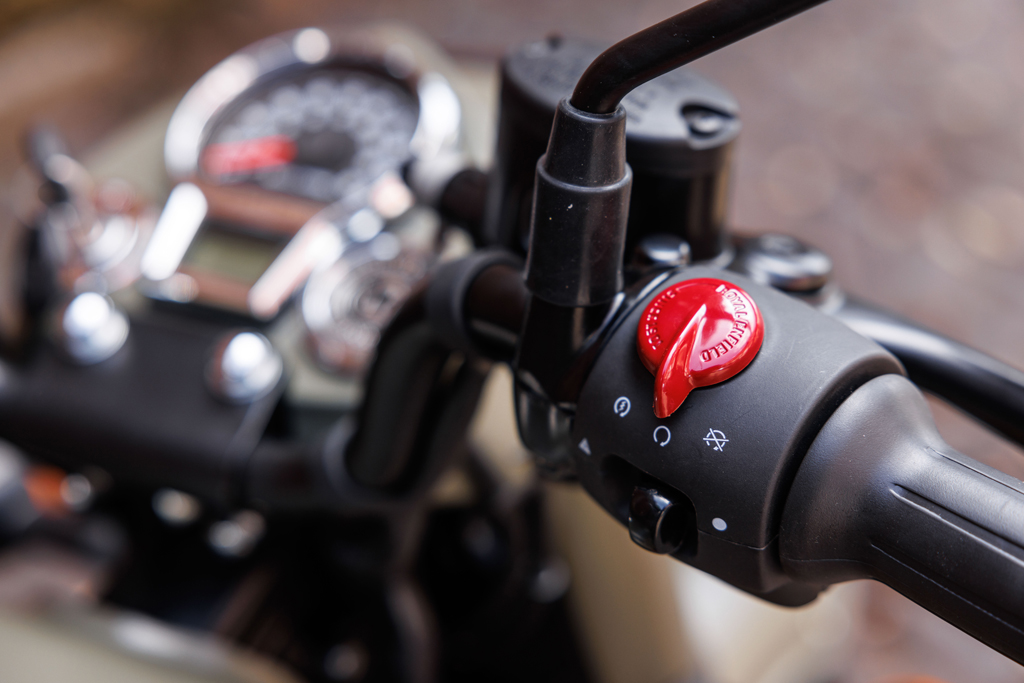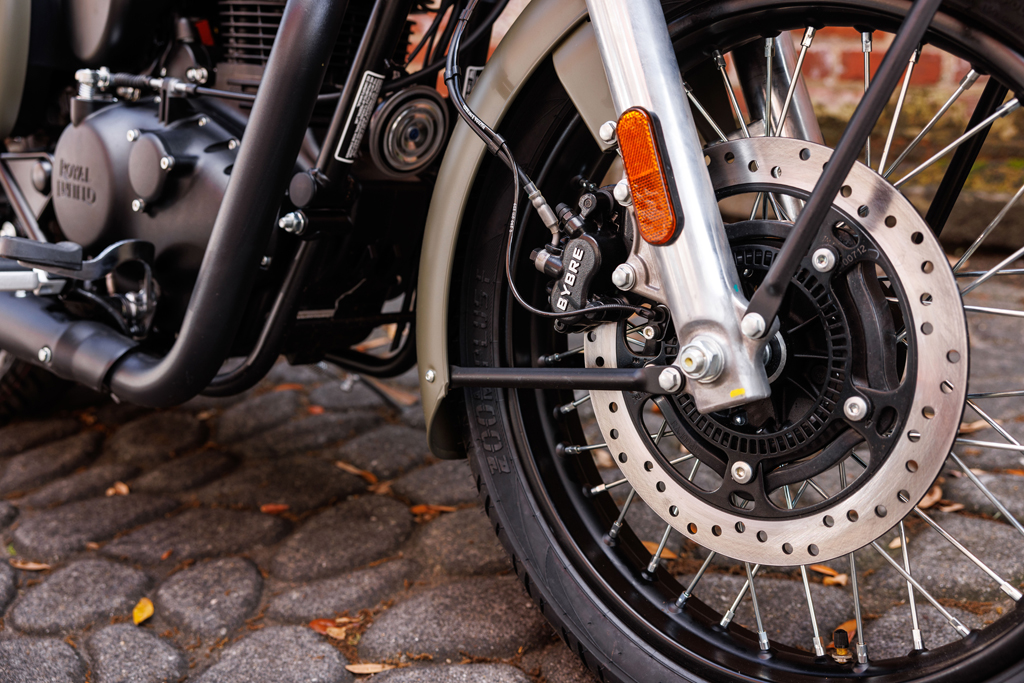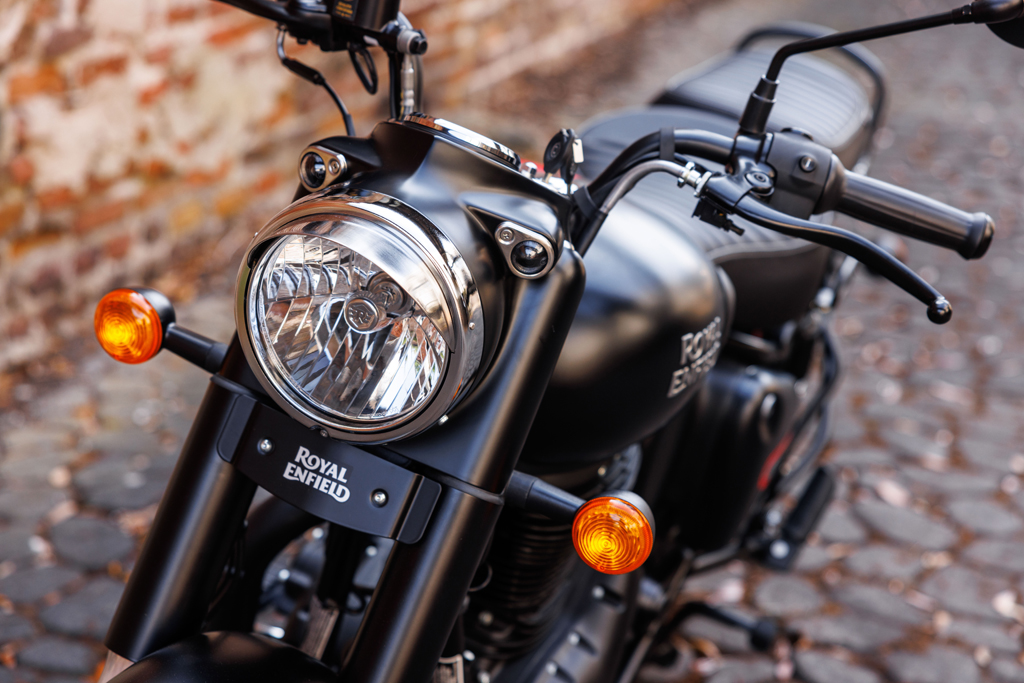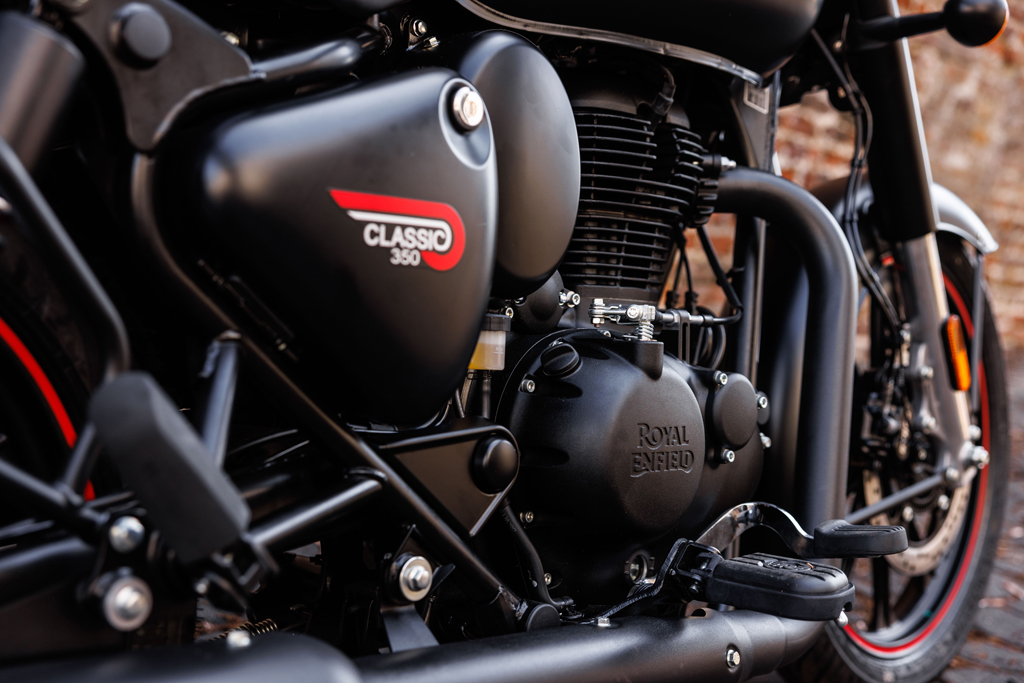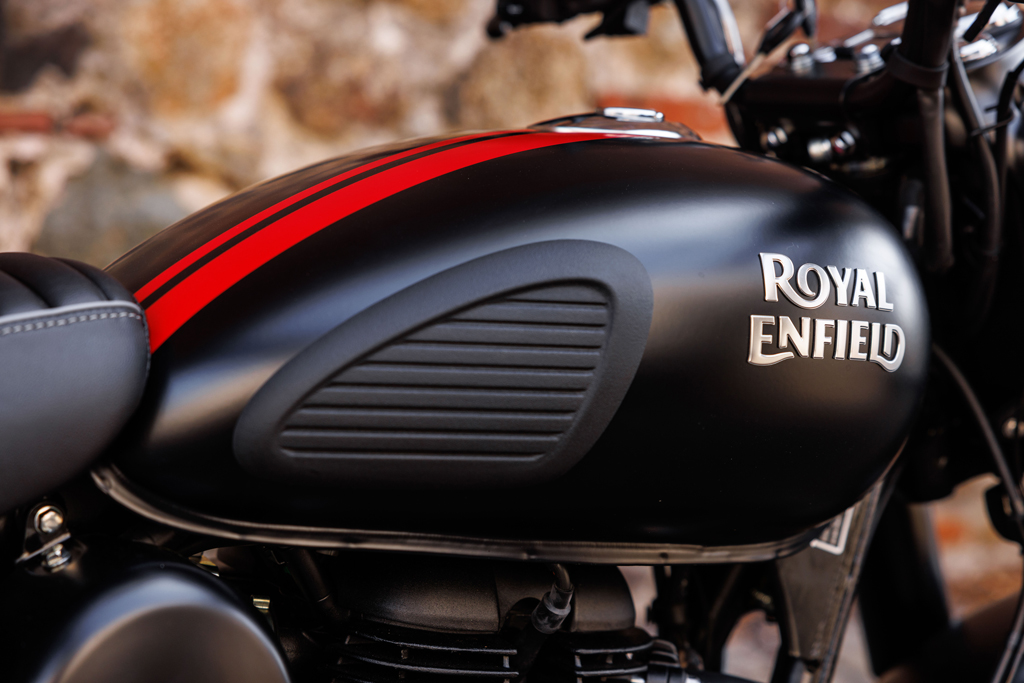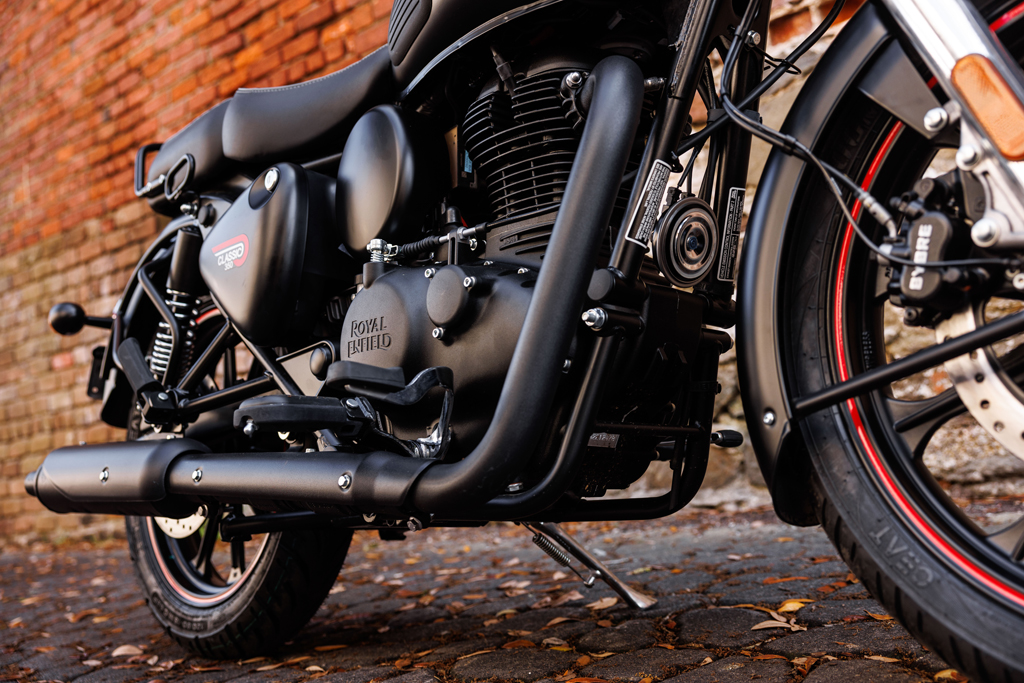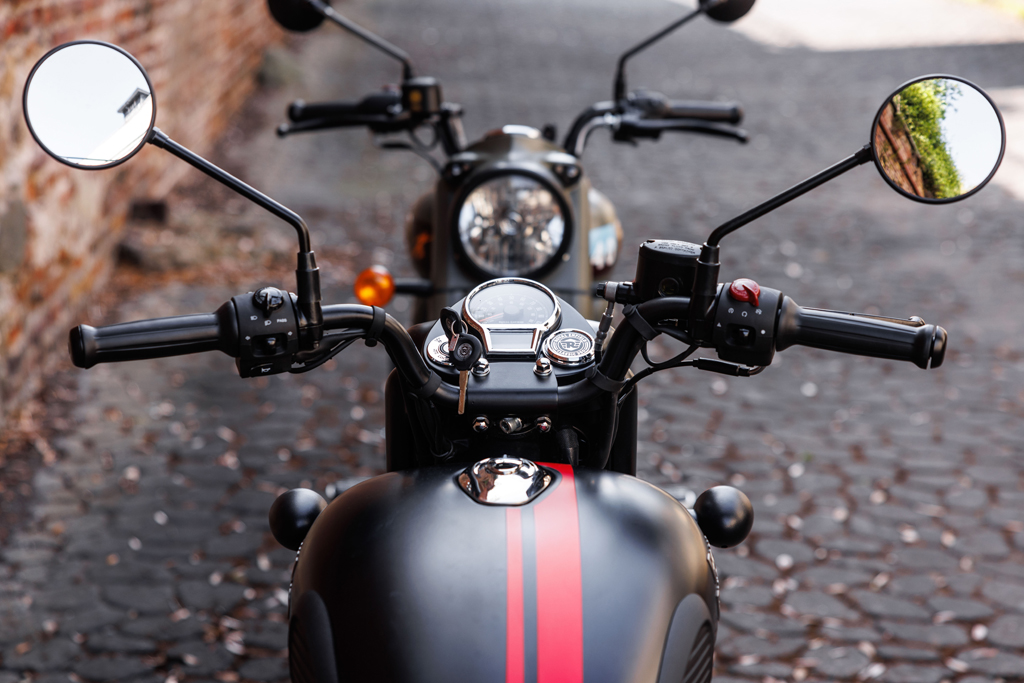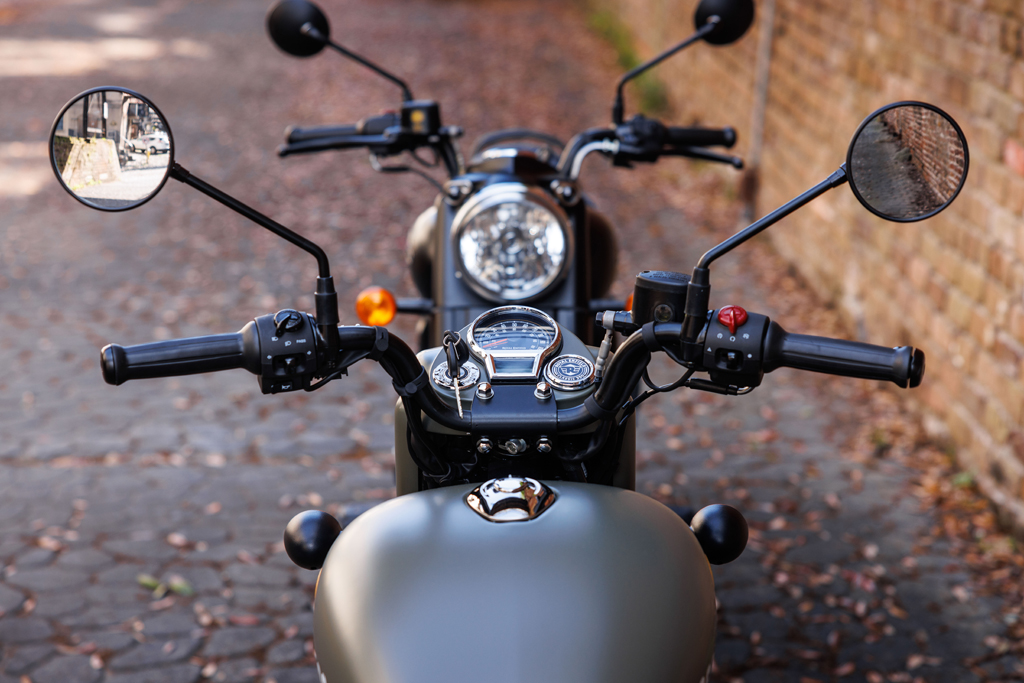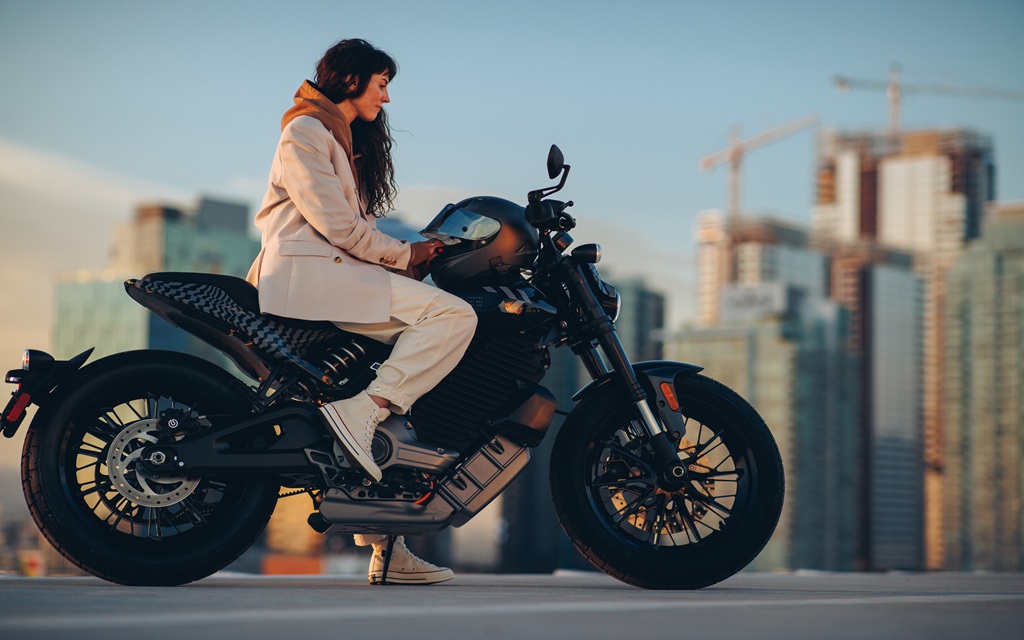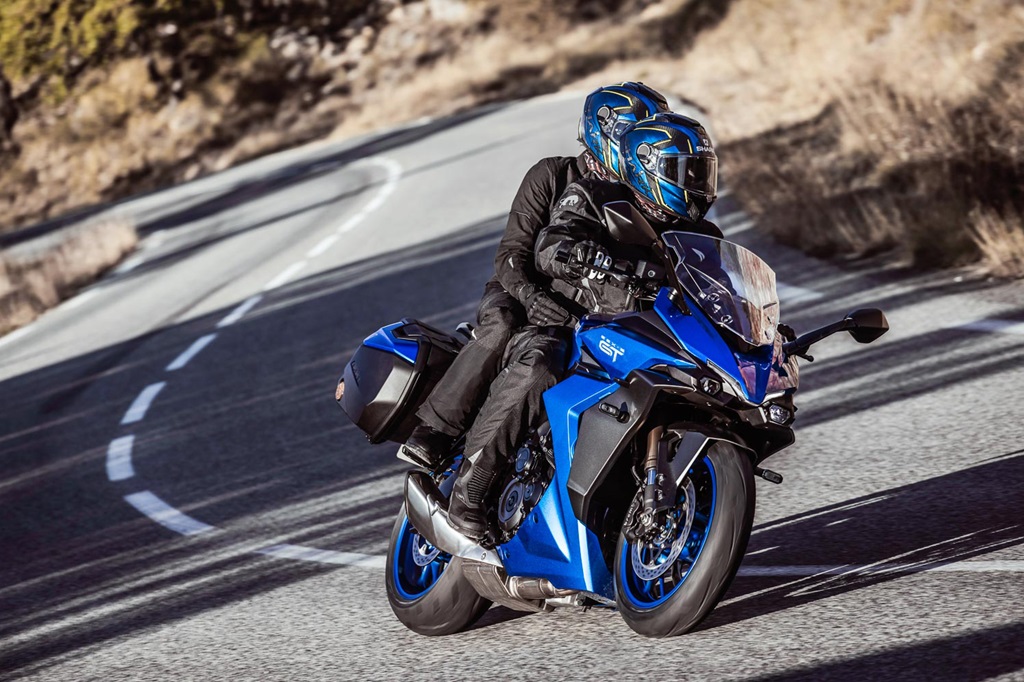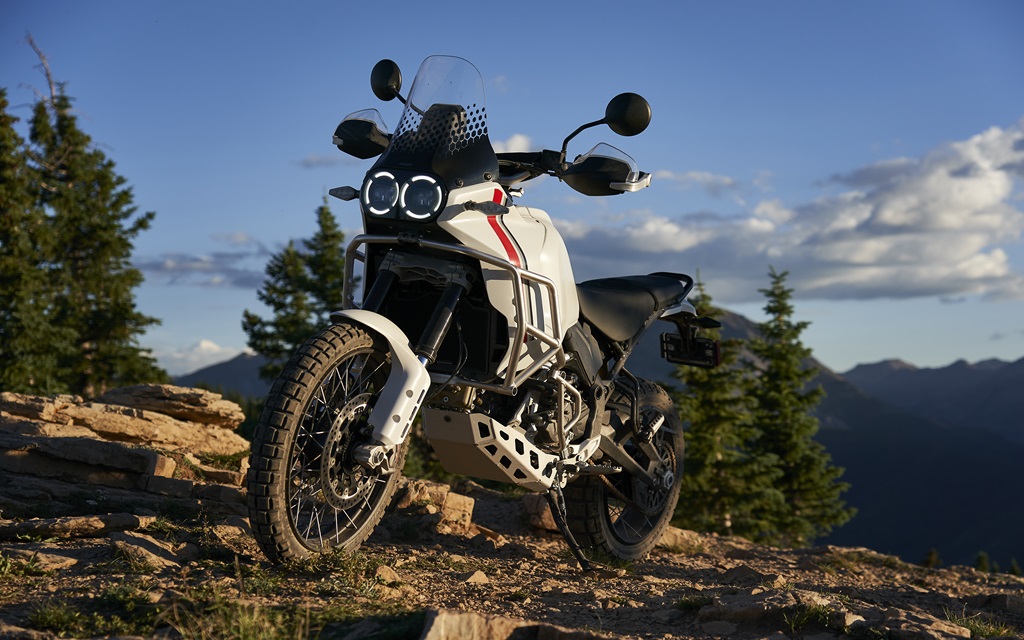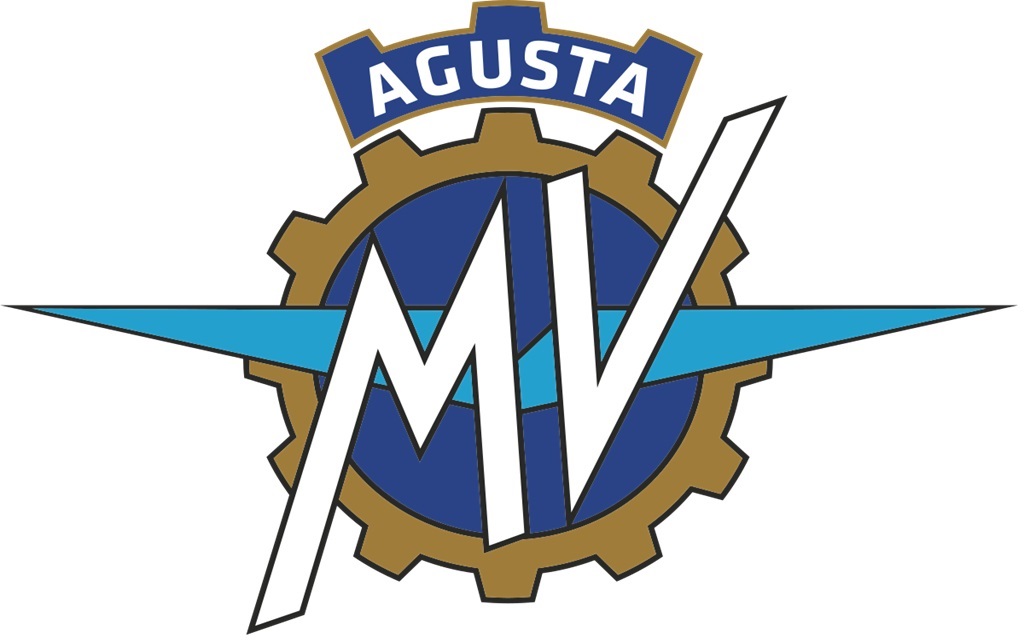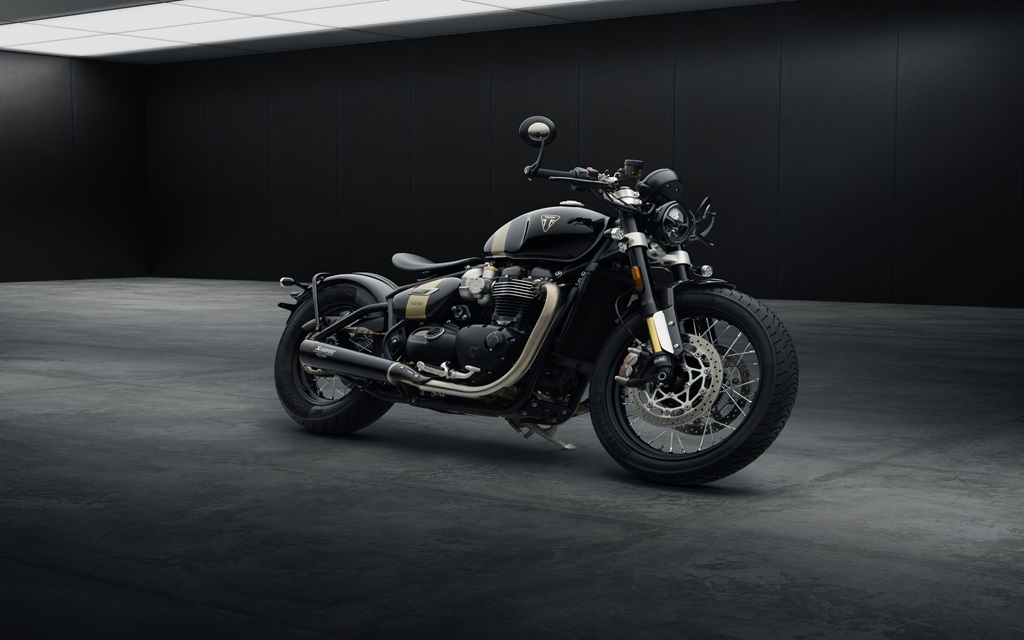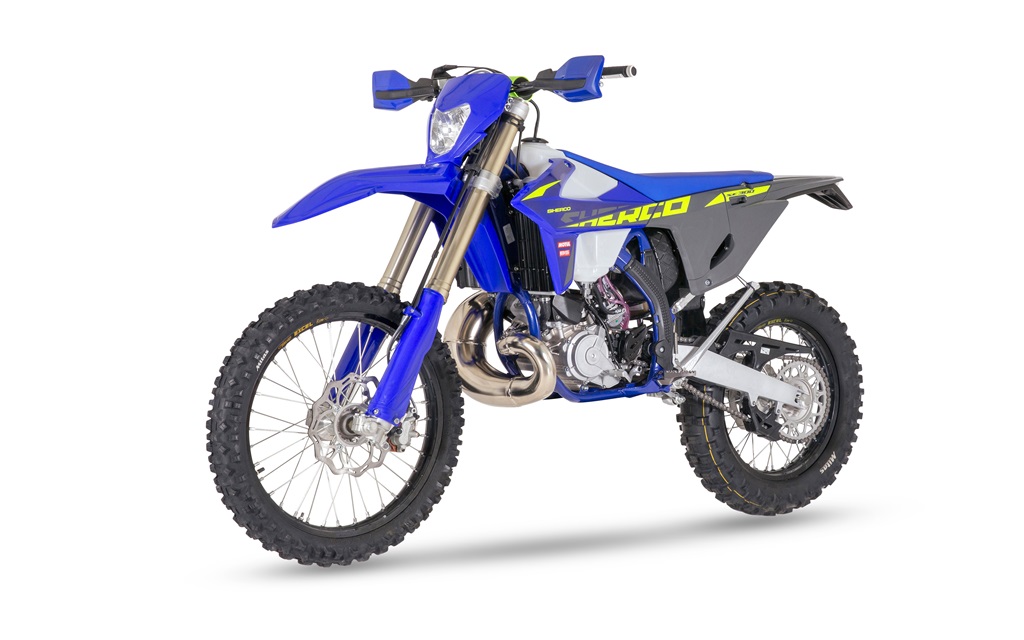*This article was published in Vol. 52 No. 3 of Cycle Canada digital magazine.
The origin of the Royal Enfield Classic 350 dates back to the post Second World War British motorcycle industry; it made its debut as a utilitarian machine initially destined to the Indian market. As time went by, it became an iconic motorcycle with a totally assumed vintage style. For 2022, it steps into the global market to offer simplicity and riding enjoyment in a basic package that’s deliciously nostalgic. I had the chance to try it out at its North American launch in Savannah, Georgia, one of the most interesting and evocative historical cities of the Southern United States.
When I received my invitation from Royal Enfield North America, I had two reasons to be enthusiastic. I was happy to be offered the chance to try out a motorcycle that I consider attractive and very interesting, but I was also very happy at the idea of going to Savannah again, a sublime city that I love and have visited a dozen times since 2001. The last time was in April 2010 in the context of a 10 days 7,500 km ride through the Southern States (Virginia, West Virginia, North Carolina, South Carolina, Kentucky, Tennessee, Alabama, Georgia). An unforgettable ride.
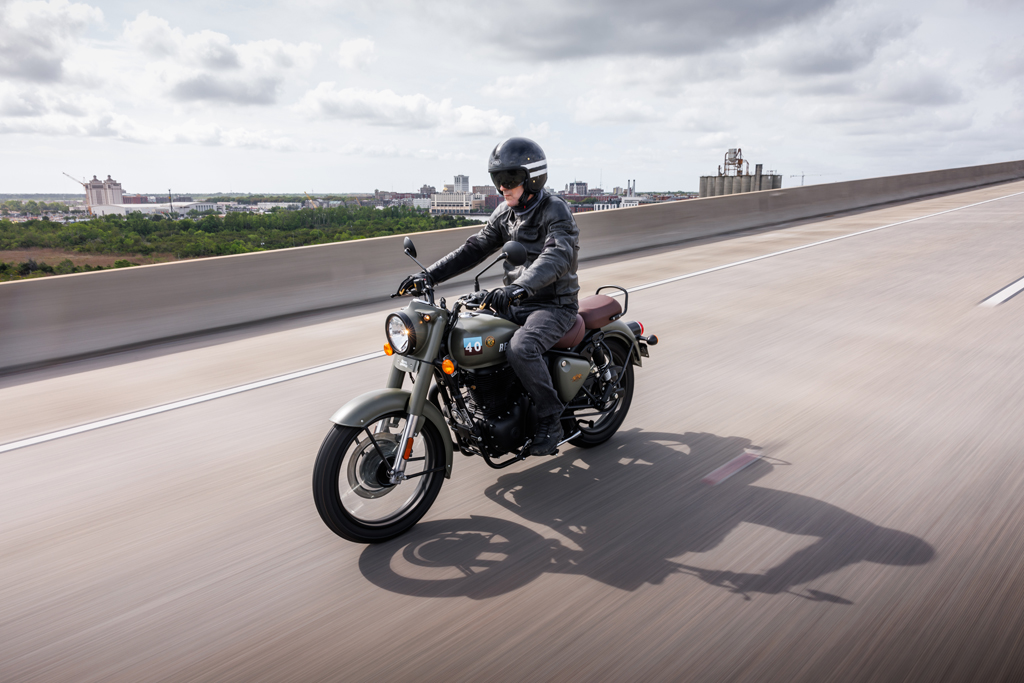
Classic for 120 years
Royal Enfield was founded in 1901, which makes it one of the oldest motorcycle brands in the world. The bikes were manufactured in the United Kingdom until the closure of the Redditch and Bradford on Avon plants in 1970. The activities were then moved to India and the brand continued its development with Madras Motors. Since 1994, Royal Enfield Motors Limited is owned by the Indian company Eicher Motors. It operates an ultramodern manufacturing plant in Vallam Vadagal, near Chennai, the city that hosts the company’s head office. In North America, the brand is represented by its Milwaukee, Wisconsin, Royal Enfield North American subsidiary since 2005.
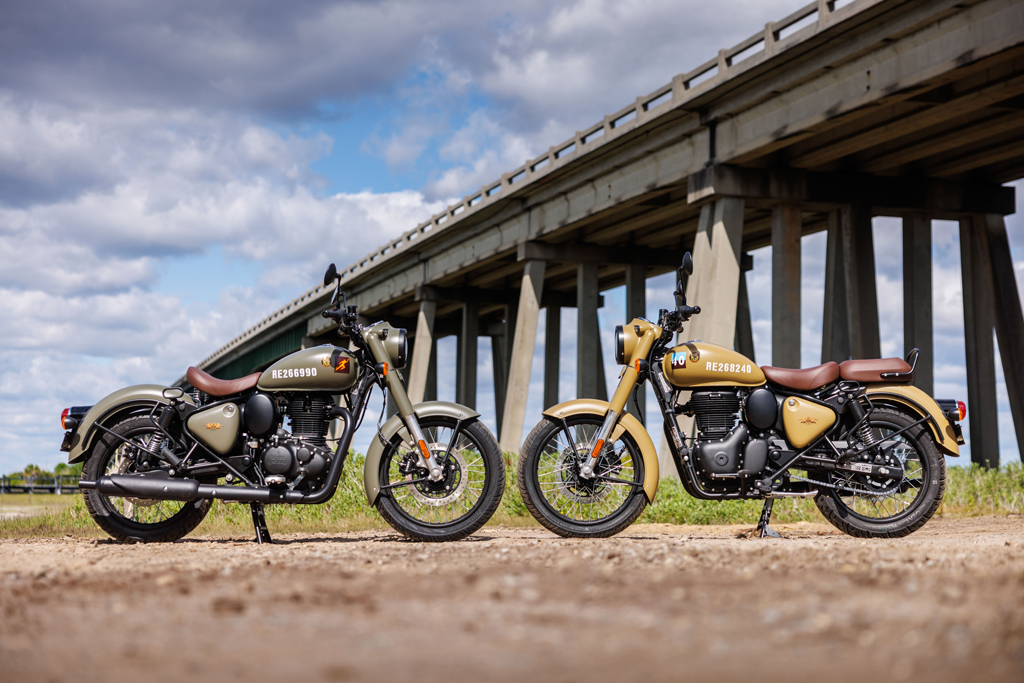
Military origins
After Second World War, India has just acquired its independence from England. It is then at war with Pakistan and needs a light, efficient, reliable and easy to maintain motorcycle for its armed forces. The government chooses the Bullet 350 G2 – the first motorcycle equipped with a mobile swingarm, launched in 1948 – because of its off-road capacities. So in 1953, the Redditch Royal Enfield plant delivers 500 Bullet to Madras Motors, destined to the Indian army. Compared to the civilian model, the army version has a matte sandy-coloured paint and a distinctive number on the gas tank. The machines have to be broken in and ready to use right away.
In 2009, the Classic (350 and 500) models revive the Bullet architecture, which is then more than 60 years old. At first, it’s destined to the Indian market; sales growth is fast and the Classic acquires cult status.
Up to now, the Classic 350 still sits on top in terms of total sales numbers for the Indian manufacturer. More than three million units have been sold worldwide, most of them on its national territory.
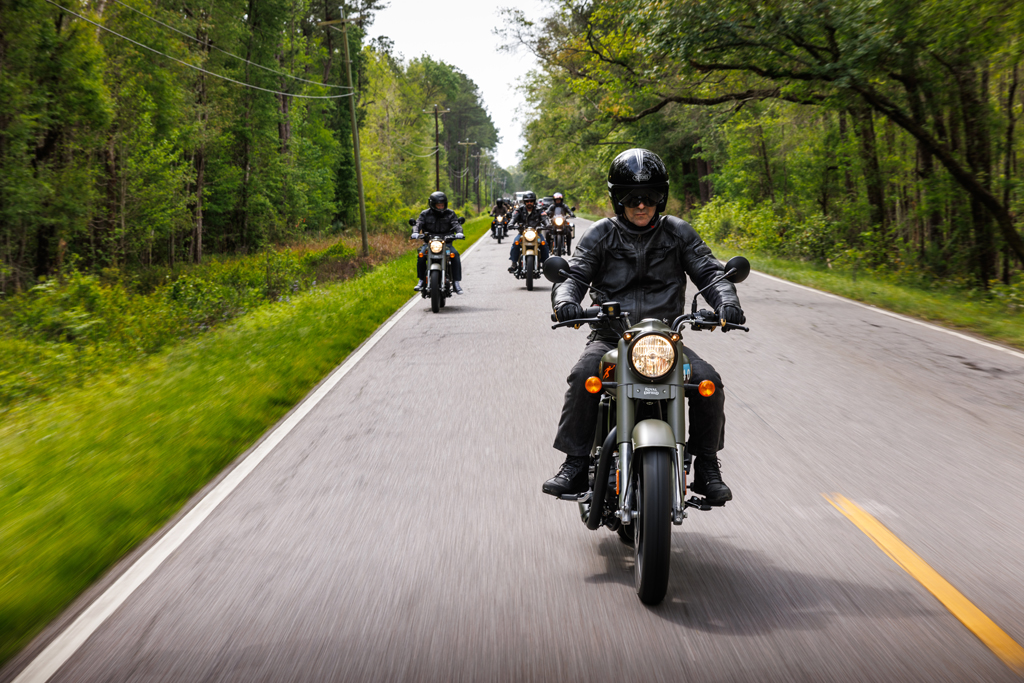
Going back in time
The all-new Classic 350 is timeless. The same can be said of Savannah’s historical quarters: tradition and classism emanate from every red brick of its century-old warehouses, now converted into tourist boutiques and luxury hotels. The Classic is the quintessential combination of a retro design with a modern and refined driving experience.
Visually, this motorcycle closely respects the traditional classic British styling codes. This is especially true for the Chrome version with its chromed gas tank reminiscent of the heyday of the BSA Goldstar. With its nine different styles and various colours, the Classic 350 changes looks depending on your selections. The Dark models could easily be taken for modern customs, à la Kawasaki W800; the Halcyon models, especially in pastel tones, as well as the Chrome, are downright vintage; the military-styled Signals connect with a distant wartime. In all cases, the Classic 350 invites us to a journey out of the present times.
Simple without being simplistic, this Royal Enfield wants to offer pure old-time driving enjoyment. You get an engine – a 349 cc SOHC single with air and oil cooling – a frame, handlebar and two wheels. No frills, and no electronics besides injection, ABS and a USB port on the left side of the bars. All the components are sturdy and time-tested. The manufacturing and machining processes have been perfected over the last 74 years and they are perfectly mastered by the Indian company. The high-tech modern materials currently used guarantee a reassuring level of reliability to Royal Enfield’s latest creations.
The all-new single is fitted with a counter balancer and it meets the BS6 Indian antipollution standard, which is more demanding than the Euro5, so it easily conforms to that one too. This “J” series engine already proved itself inside the Meteor 350. It puts out 20.2 hp at 6,100 rpm and a torque of 19.9 lb-ft at 4,000 rpm. It is fed through a modern electronic fuel injection system, and the classic silencer plays an exhilarating soundtrack. The transmission is a five-gear constant mesh unit connected to a wet multi-disc clutch. Power is then transmitted to the rear wheel through a conventional chain.
The chassis is built around a double cradle reinforced steel frame that delivers better stability and makes handling easy and precise.
Suspension is taken care of by a non-adjustable 41 mm telescopic fork up front, with a travel of 130 mm, and a pair of shocks at the rear, adjustable for preload. Ground clearance is 170 mm.
The Dark models ride on 10-spoke forged wheels; the Signals are equipped with wire-spoked wheels, 19-inch front, 18-inch rear. All the Classic 350 are shod with relatively narrow CEAT Zoom Plus Indian tires (100/90-19 and 120/80-18) that favour agility and manoeuvrability.
Braking is by Brembo’s Indian subsidiary, ByBre, using a single 300 mm disc upfront with double-piston caliper, and a single 270 mm rear disc with single-piston caliper. ABS is standard.
The Royal Enfield is fitted with a centre stand as standard equipment, which is becoming a rarity nowadays. A nice practical touch that’s appreciated.
The Canadian models are equipped with a passenger seat and footpegs, but you can remove them if you want to go for a more utilitarian look. That might be especially appropriate with the military-inspired models where you can replace the passenger seat with a rack, a box or a travel bag.
An incongruity in the North American market?
In India, the road network includes lots of trails and variable quality secondary roads where a small-engine motorcycle is often more appropriate. What’s more, the speed limit is 80 km/h for motorcycles (140 km/h for cars). In Europe, the cities are generally close to one another and there is a wide network of secondary roads. But the speed limit is also 70-90 km/h depending on countries and regions.
It’s a totally different story in North America where the network includes lots of fast roads and interminable straight line highways that are not too inviting for smaller motorcycles. Plus, there is no small bike culture to speak of here. The way scooters – even the bigger ones – and beginner’s bikes are considered makes you realize how different the paradigm is on this side of the Atlantic.
So one can wonder what the real market is in North America for the Royal Enfield Classic 350 models (and for the Meteor 350 and Himalayan 401). Are they simply beginner’s bikes, or are they fun machines for city and peri-urban riding that can also turn out to be ideal for Sunday rides in the nearby countryside? Or maybe they are classic bikes for nostalgic old people or trendy young city dwellers…
I got answers to some of these questions in the context of this encounter with the Royal Enfield in the pearl of Georgia. In the morning, we wandered around in Savannah to shoot action photos in the old city. In this surrounding, the Classic proved agile and easy to master right away.
With its low seat (805 mm), narrow architecture and reasonable weight (195 kg wet), the Classic 350 is easy to maneuver and allows tight turns. It responds to your fingertips and turns out to be pretty agile in the city. What’s more, it’s user-friendly and pilots of all sizes can easily take place aboard and put both feet firmly on the ground.
The seat is well padded and it’s comfortable for short distances, downtown or peri-urban outings as well as for longer excursions. Even for travelling if you like.
The cockpit is simple. There is a triangular housing hosting a round analogue speedometer on top of a small rectangular LCD screen that displays a fuel gauge, a clock, an odometer and one of the two trip meters you select. The screen is flanked by the main switch on the left and a metallic Royal Enfield logo on the right. The commands fall naturally in your hand and are easy to use. Here again, no frills. Only the essential.
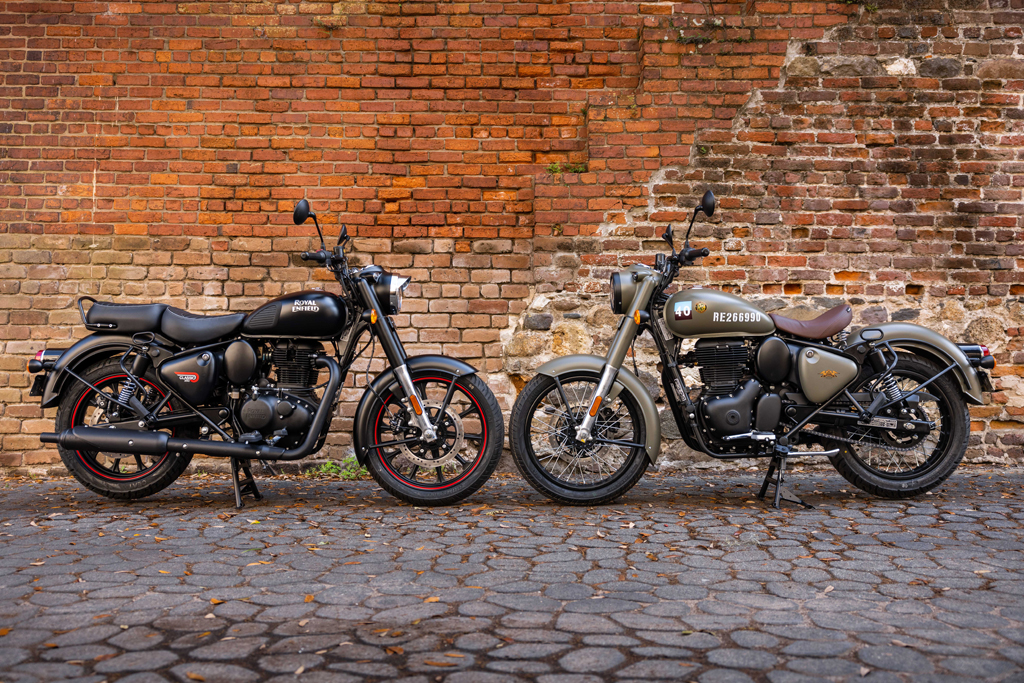
A fine engine
The dynamic and torquey engine is a blast to use in an urban environment. Even if it’s fitted with fuel injection and a counter balancer, the long stroke 350 retains the character of a big single. It vibrates just enough to make it feel lively but the vibrations never get annoying. It is totally in tune with the times and in fine concordance with the style of the Royal Enfield. What’s more, the rich sonority of the exhaust gives it even more character.
The engine is very tractable; it can accelerate from low revs without knocking and you can take off in second gear or accelerate from idle with no risk of stalling. That’s pretty rare for a single. Even with its limited power output, which sits between that of a 125 cc four-stroke (around 15 hp) and that of a 300 cc dual sports (30 hp for a Honda CRF 300 Rallye or a Kawasaki KLX 300), the Royal Enfield quickly reaches 100 km/h. But it then tops at 121 km/h with your stomach on the gas tank. Not too powerful, indeed, but that’s pretty much what could be expected from the little Indian machine. Moreover, with its generous low- and mid-rev torque, the engine delivers all you need to have fun in the city and on secondary roads.
The 5-speed transmission is well calibrated and very smooth. What’s more, it is precise. In the course of this quick test, I never missed a gear or encountered a false neutral.
For almost two hours, we explored the narrow downtown streets, passed by squares covered with palm trees, magnolia and camellia bushes, and parks with rows of oak trees wrapped in surprising gothic-looking Spanish moss that makes them look like ghosts, especially on full moon nights.
We then crossed the Savannah River on the Talmadge Memorial Bridge and went for a 100 km loop in South Carolina. We first took Road 25, a secondary road that passes in the city of Port Wentworth and then connects with Road 17 to Limehouse and Hardeeville going through the Savannah National Wildlife Refuge and the Kingfisher Pond Recreational Area. From there, the road is a straight line that cuts through the core of a pine and cypress forest with black water swamps probably infested with alligators (I didn’t dare put a foot in to check…). In these swamps, the decomposing vegetation produces tannins and humic acids; that’s why the water has this particular colour and fetid smell. Towards the west, there are huge farmlands (tobacco, cotton); towards the east, the coastal plains and its delightful iodized mist.
On this monotonous and seemingly endless road, we easily maintained a cruising speed of 110 km/h. The vibrations are well under control and comfort is adequate. The suspension is a tad firm for me and my 80 kg, and the only adjustment is the rear springs preload. But that does not alter the pleasure I feel riding the Classic. The soft seat adds to that sensation and I could keep riding in the wind for hours.
Concerning handling, there are no particular critiques to be made. The bike is solid and it maintains its direction without any problem. As for the machine’s behaviour in curves, it was difficult to make a proper evaluation in such a rectilinear environment. But in the few long and fast curves we went through, the Classic 350 was imperturbable and it stayed on its track without any hint of parasitic movements.
Wind protection is OK, though minimalist, as with most motorcycles without a fairing or a windshield. This being said, the limited speed reduces the pressure of the wind. A blessing in disguise.
Braking is adequate; it easily slows down the Royal Enfield, at least from the speeds it can reach. Using both brakes simultaneously reduces the braking distances.
The CEAT Zoom Plus stock tires seem to perform correctly but I did not have the opportunity to really evaluate them in this particular riding environment. That’s why I won’t be stating any kind of judgment regarding their performances. However, if I owned a Classic, I would replace them with tires offering more grip – or models I know better and have more confidence in – once they wear out. But in the circumstances where I tried them, I have no critics to formulate.
In the afternoon, after a steamboat tour on the Savannah River, we went for a ride in the chic suburbs of Whitemarsh and Wilmington Islands, southeast of the city, near the Tybee Island seaside community. On our way there, we followed scenic roads that meander by opulent houses, the golf and country club, all under the dome formed by the oak trees’ tentacular branches rejoining one another over the road. The sun was going down and the golden light added to the magical atmosphere. Despite a temperature of 28 degrees, we were protected by the canopy. The air was dense, but relatively cool in the circumstances. And we could breathe the sea air. In this bucolic setting, the Royal Enfield was perfect, allowing us to dawdle at a slow pace. No stress. No hurry. Just enjoying the moment. A pure delight!
Back to the hotel
But everything has to come to an end, and we have to rush back to the hotel. So we take the Islands Expressway (80) and the Harry S. Truman Parkway that leads to President Street, in Savannah, a main thoroughfare that connects with the street of our hotel. This highway ride allowed us to see that the Classic 350 can easily keep a 115-120 km/h cruising speed. However, then, there’s not much oomph left to rapidly pass a vehicle or go up a hill.
In my opinion, the Classic 350 is well suited for newcomers and for former motorcyclists who want to reconnect with riding aboard a simple and easy machine, but also for experienced pilots seduced by its vintage look. It’s also a good choice as a second bike, for those days when you wanna take it easy.
Personally, I could easily live on the day-to-day basis with this Royal Enfield. I always had a crush on smaller bikes – a cultural trait – and I like this little Classic 350, especially in its post Second World War Signals khaki version. Just add a Belstaff waxed cotton jacket, an open-face helmet with a pair of aviator-style glasses and a white silk scarf to complete the voluptuously old-fashioned look of the little Indian machine. As for its limitations, I would choose my itineraries accordingly, in order to reduce the inconveniences to a minimum.
Available at your local dealer
The Classic 350 is available in nine different style and colour combinations. The Dark models, with forged wheels, and the military-inspired Signals, with wire-spoked wheels, are presently available at your local Royal Enfield dealer ($6,099). The Halcyon ($5,899) and Chrome ($6,299) models, with their chromed gas tank, special logo and wire wheels will be available later this summer. All 350 Classic models come with a three-year unlimited kilometres warranty, with roadside assistance included. At such a price, they’re quite a bargain!
To learn more, visit the Royal Enfield Canada Website.
SPECIFICATIONS
GENERAL DATA
Wet weight: 195 kg
Seat height: 805 mm
Fuel capacity: 13 L
Fuel consumption: 3 L/100 km
Fuel range: 430 km
Colours: Halcyon Green, Halcyon Black, Halcyon Blue; Dark Stealth Black, Dark Gunmetal Grey; Signals Desert Sand, Signals Marsh Grey; Chrome Red, Chrome Bronze
Price: $5,899 (Halcyon); $6,099 (Dark & Signals); $6,299 (Chrome)
ENGINE
Engine type: SOHC 2-valve four-stroke single, air/oil-cooled, Euro 5
Maximum power: 20.2 hp at 6,100 rpm
Maximum torque: 19.90 lb-ft at 4,000 rpm
Displacement: 349 cc
Bore x stroke: 72 x 85.8 mm
Compression ratio: 9.5:1
Carburation: electronic fuel injection
Transmission: 5-speed
Final drive: chain
CHASSIS
Frame: tubular steel, double cradle
Suspension: 41 mm telescopic fork, non-adjustable; two rear shocks, adjustable for preload
Wheelbase: 1,390 mm
Rake/trail: 26°/111 mm
Brakes: single 300 mm front disc with ByBre 2-piston caliper; single 270 mm rear disc with single-piston caliper. ABS standard
Tires: CEAT Zoom Plus; 100/90-19 front; 120/80-18 rear
QUICK VERDICT
WE LIKED
The vintage British look
Easy to get used to
The engine has lots of character
Low fuel consumption
No electronics
The centre stand is standard
WE LIKED LESS
The modest performances of the engine
Suspension is a tad too firm
The stock tires (CEAT)
